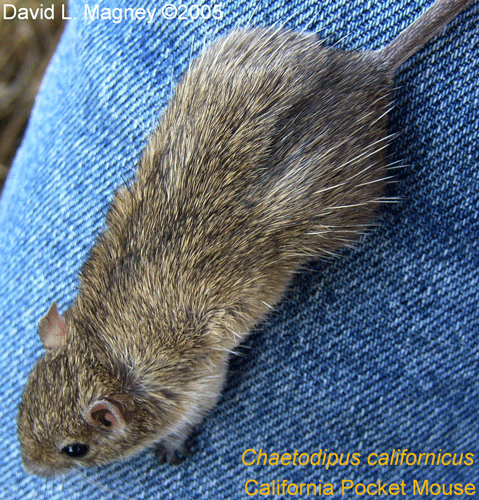

Today, most mice are cordless, using Bluetooth (if in the computer) or by plugging the transceiver that comes with the mouse into the USB port. Laptops have the equivalent function in a built-in trackpad, although many users prefer the handheld mouse.ĭecades ago, it was called a "mouse" because the cord resembled a mouse's tail, and wired mice plug into the USB or PS/2 port.
SPINY POCKET MOUSE CA FREE
This article is provided by FOLDOC - Free Online Dictionary of Computing ( ) mouseThe primary pointing device on a desktop computer. Microsoft IntelliMouse Explorer, work on nearly any surface. Some optical designs may requireĪ special mouse mat marked with a grid, others, like the Light-emitting diode and photocells instead of a rollingīall to track its position. A foot-controlled mouse is one used on the floor A tailless mouse, or hamster, transmits its Many other alternatives to the conventional roller-ball mouseĮxist. These inputĭevices work like the mouse, but take less space and don't Notebook models, may have a trackball, touchpad or
SPINY POCKET MOUSE CA PORTABLE
However, some systems, especially portable laptop and Most modern computers include a mouse as standard equipment. Right-click (to press and release the right mouse button},Īnd drag (to hold down the mouse button while moving the

(to press and release a mouse button), double-click to press and release a mouse button twice in rapid succession, Point (to place the pointer over an on-screen item), click The five most common "gestures" performed with the mouse are: Screen (an icon or a menu item), and the user then clicksĪ mouse button to actually affect the screen display. Normally, the pointer is positioned over something on the Patterns of mouse movement with no buttons pressed). Typically does nothing (though some CAD systems respond to Just moving the pointer across the screen with the mouse Some systems allow the mouse button assignments to be swapped Scrolling or other special operations defined by the software. Between its left and rightīuttons, a mouse may also have a wheel that can be used for With fewer mouse buttons these require combinations of Typical operations include calling up aĬontext-sensitive menu, modifying the selection, or pasting Different operating systems and graphical user interfaces have different conventions for using the otherīutton(s). The left-mostīutton (the primary mouse button) is operated with the indexįinger to select and activate objects represented on the The user may press, or click, to initiate various actions suchĪs running programs or opening files. Included on the mouse are usually two or three buttons that Hand, and some come in left-handed versions. Some mice are contoured to fit the shape of a person's right Processor the task should be assigned a high priority to This may be doneĭirectly by the graphics adaptor, but where it involves the Screen to follow the movements of the mouse. The computer then moves the mouse pointer on the The computer, usually through a connecting wire - the mouse's The distance andĭirection information from the sensors is then transmitted to The rotating ball turns the shafts, and sensors inside the Shafts set at right angles to each other inside the mouse. The ball is also in contact with two small As the mouse moves, aīall set in a depression on the underside of the mouse rollsĪccordingly. Mouse in hand, the computer user can select, move, and changeĪ conventional roller-ball mouse is slid across the surface Pointer that's normally shaped like an arrow. The mouse is a device used to manipulate an on-screen The most commonly used computer pointing device, first introduced by Douglas Engelbart in 1968. The pocket mouse and the kangaroo rats and mice are members of the suborder Sciuromorpha, or squirrellike rodents. Still other families of the Myomorpha include the dormouse, jumping mouse, and jerboa. The cosmopolitan family Cricetidae includes the native New World mice, such as the deer mouse, American harvest mouse ( Reithrodontomys), the carnivorous grasshopper mouse, the South American field mice, the pack rat, and the rice rat it also includes the various Old and New World species of vole, hamster, lemming, muskrat, and gerbil. The Old World family Muridae includes the now ubiquitous house mouse, as well as a great variety of wild-living Old World species, including the Old World field mouse, the tiny European harvest mouse ( Micromys minutus) and the African tree mice. The approximately 1,100 species in this enormous group are classified in several families. Most, but not all, of the rodents called mice are members of the rodent subclass Myomorpha, or mouselike rodents.


 0 kommentar(er)
0 kommentar(er)
